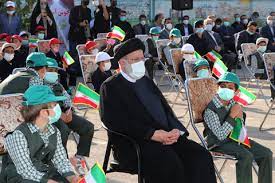In today’s fast-paced and ever-evolving world, critical thinking skills are more important than ever. These skills enable individuals to analyze, evaluate, and make decisions based on logical reasoning rather than assumptions or emotions. One method that has been instrumental in enhancing critical thinking, particularly in educational settings, is the concept of “پرسش مهر” (Question of Mercy). This method encourages students to engage in deep questioning, reflection, and analysis, which are key components of critical thinking. In this article, we will explore the role of پرسش مهر in fostering critical thinking skills and how it can be effectively utilized in educational environments.

Understanding پرسش مهر
پرسش مهر, or the Question of Mercy, is a technique introduced within the educational system in some countries to promote reflective thinking. The concept encourages students to pose and answer challenging questions that delve deeper into the subject matter. Rather than simply memorizing facts or regurgitating information, students are encouraged to explore the “why” and “how” behind concepts, fostering a more comprehensive understanding of the material. This technique aligns with the principles of active learning, where the student is an active participant in the learning process rather than a passive recipient of information.
The core idea behind پرسش مهر is that by asking thought-provoking questions, students engage with the content in a meaningful way. They are prompted to think critically about the material, connect it to other knowledge, and apply it to real-world scenarios. This not only enhances understanding but also cultivates the ability to think independently, a crucial skill in both academic and professional settings.
How پرسش مهر Fosters Critical Thinking Skills
Encourages Inquiry and Exploration
At the heart of critical thinking is the ability to ask questions. پرسش مهر promotes this by encouraging students to inquire beyond surface-level knowledge. By framing questions that challenge assumptions and explore different perspectives, students learn to look at issues from multiple angles. This form of inquiry fosters curiosity and a desire to understand the underlying principles of concepts rather than simply accepting them at face value.
For example, in a history lesson, instead of asking students to memorize dates or events, the پرسش مهر technique might ask, “What were the social and economic factors that led to this historical event?” This question forces students to think critically about the context and the larger picture, rather than just memorizing facts. By encouraging this type of inquiry, students develop the skills needed to analyze and evaluate information in a structured manner.
Promotes Reflection and Self-Evaluation
Critical thinking also involves self-reflection and the ability to evaluate one’s thoughts and reasoning. پرسش مهر facilitates this by prompting students to reflect on their own thinking processes. When students are asked challenging questions, they must take the time to think through their responses, consider different perspectives, and assess the validity of their own ideas.
For instance, a student might be asked, “Do you agree with this theory? Why or why not?” This encourages them to evaluate the strengths and weaknesses of the theory, considering both sides of the argument. Through this process, students learn to identify their biases, recognize gaps in their understanding, and refine their reasoning abilities. This reflective practice is a key aspect of critical thinking, as it enables individuals to continually improve their thought processes.
Develops Problem-Solving Abilities
One of the most important outcomes of critical thinking is the ability to solve complex problems. پرسش مهر plays a significant role in developing problem-solving skills by challenging students to think deeply about the issues at hand. When students are presented with a problem, پرسش مهر encourages them to ask questions that push them to think creatively and critically about potential solutions.
For example, in a science lesson, students might be asked, “What alternative methods could we use to test this hypothesis?” This question forces students to consider various approaches and evaluate their effectiveness, which sharpens their problem-solving abilities. By regularly engaging in this type of questioning, students develop a toolkit of strategies that they can apply to solve problems in different contexts.
Enhances Communication and Argumentation Skills
Critical thinking is not just about individual reflection; it also involves the ability to communicate and justify one’s thoughts effectively. پرسش مهر encourages students to articulate their reasoning and defend their ideas. When students answer challenging questions, they must organize their thoughts coherently and present them in a logical manner. This enhances their ability to communicate complex ideas clearly and persuasively.
Furthermore, پرسش مهر fosters the development of argumentation skills. Students are often required to back up their answers with evidence and reasoned arguments. This process helps them learn how to construct logical arguments, evaluate evidence, and anticipate counterarguments. These skills are essential for effective communication, whether in academic debates, professional settings, or everyday discussions.
The Role of پرسش مهر in Education
Shifting from Passive to Active Learning
Traditional educational methods often focus on passive learning, where students receive information and memorize it for exams. However, this approach does not encourage deep thinking or the development of critical skills. پرسش مهر shifts the focus from passive reception to active engagement. By encouraging students to ask questions, reflect on their ideas, and engage in meaningful discussions, this technique transforms the learning process into an interactive and dynamic experience.
In an active learning environment, students are not just absorbing information—they are interacting with it, questioning it, and making it their own. This type of learning fosters curiosity, independence, and a deeper understanding of the material. By incorporating پرسش مهر into the curriculum, educators can create a classroom atmosphere that values inquiry, reflection, and critical thinking.
Cultivating Lifelong Learning
Critical thinking is not just a skill for academic success; it is essential for lifelong learning and personal growth. By encouraging students to engage with پرسش مهر, educators help them develop habits of mind that will serve them throughout their lives. The ability to think critically, ask insightful questions, and evaluate information is invaluable in both personal and professional contexts.
Moreover, the skills developed through پرسش مهر extend beyond the classroom. In a world where information is constantly changing and evolving, the ability to think critically and adapt to new circumstances is crucial. By fostering critical thinking skills at an early age, educators equip students with the tools they need to navigate an increasingly complex world.
Conclusion
The role of پرسش مهر in fostering critical thinking skills cannot be overstated. By encouraging students to ask meaningful questions, reflect on their ideas, and engage in problem-solving, this technique cultivates the core elements of critical thinking. Moreover, it transforms the learning process from a passive activity to an active and engaging experience that prepares students for success in both their academic and personal lives.
As educators continue to embrace active learning methods, پرسش مهر stands out as a powerful tool in developing the next generation of critical thinkers. Whether in the classroom or beyond, the ability to think critically, ask thoughtful questions, and evaluate information is an essential skill that will serve individuals throughout their lives. The adoption of پرسش مهر in educational systems around the world represents a step toward fostering a more thoughtful, informed, and engaged society.



